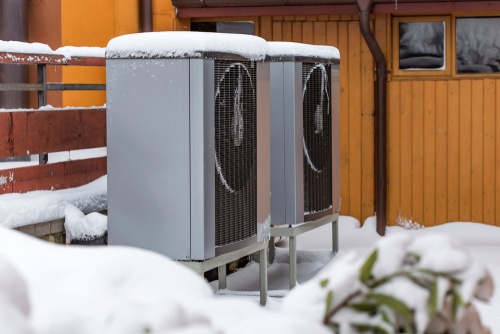The concept of carbon pollution is normally associated with the transportation sector. When air pollution is mentioned, we tend to imagine a large number of vehicles stuck in traffic, releasing emissions into the atmosphere. However, buildings actually have a higher environmental footprint than transportation, although it is less evident.
Buildings produce pollution both directly and indirectly, representing 39% of carbon dioxide emissions according to the US Green Building Council. Transportation is in second place with 33% of emissions, and industrial activity is in third place at 29%.
Make your building greener and reduce energy expenses.

Direct Building Emissions
Buildings release carbon dioxide directly when they use equipment that relies on combustion. The following are some of the most common examples:
- Boilers and furnaces used for space heating consume fuels like natural gas and heating oil. New York City has banned the heaviest oil types, #4 and #6, since they have the highest carbon footprint - only natural gas and the lighter #2 heating oil are allowed.
- Water heaters also use fossil fuel combustion as a heat source. For a given load, heaters with a storage tank use more energy than tankless instantaneous heaters, and their emissions are also higher as a result.
- Onsite power generation also contributes to building emissions if the energy input is a fossil fuel. For example, both diesel generators and steam microturbines produce emissions, although the impact per kilowatt-hour is normally higher with diesel.
All the functions mentioned above can be accomplished without fossil fuel combustion. For example, heat pumps can replace boilers, furnaces and conventional water heaters without the local emissions, using only electricity. On other hand, wind turbines and solar photovoltaic systems are viable for electricity generation, and they can be combined with energy storage to compensate for the variability of wind and sunshine.
Indirect Building Emissions
Not all the emissions attributed to buildings are produced on site. For example, if you have a property where all heating systems run with energy-efficient heat pumps, no emissions are produced locally. However, if the electricity supply comes from power stations fired by natural gas or coal, the heating systems are still producing emissions indirectly.

Indirect emissions can also be attributed to heating systems that use fossil fuel combustion. Other than the emissions produced with direct combustion, there are indirect emissions associated with extracting, processing and delivering fossil fuels to the building.
Building electrification is important because it removes local emissions, but a complete decarbonization also requires a transition to clean power sources. With electrification alone, emissions are simply being moved off-site; this mitigates their impact on human health because they are removed from urban areas, but the environmental damage remains.
New York City: A Leader in Green Construction
New York City provides an example of how governments can take action to decarbonize the building sector. The ambitious 80x50 plan aims for an 80% reduction in city emissions by the year 2050, with respect to 2005. In addition, the Greener Greater Buildings Plan (GGBP) introduced several laws to make buildings more efficient, including Local Law 85, which created the NYC Energy Conservation Code.
Energy efficiency measures are among the most cost-effective ways to cut emissions, since they provide a financial return for building owners. The same can be said of onsite renewable generation systems, such as solar arrays and wind turbines.
The first step to save energy is knowing how your building uses it. NY Engineers can analyze your consumption with energy modeling: call (786) 788-0295212-575-5300 or write at info@ny-engineers.com.
